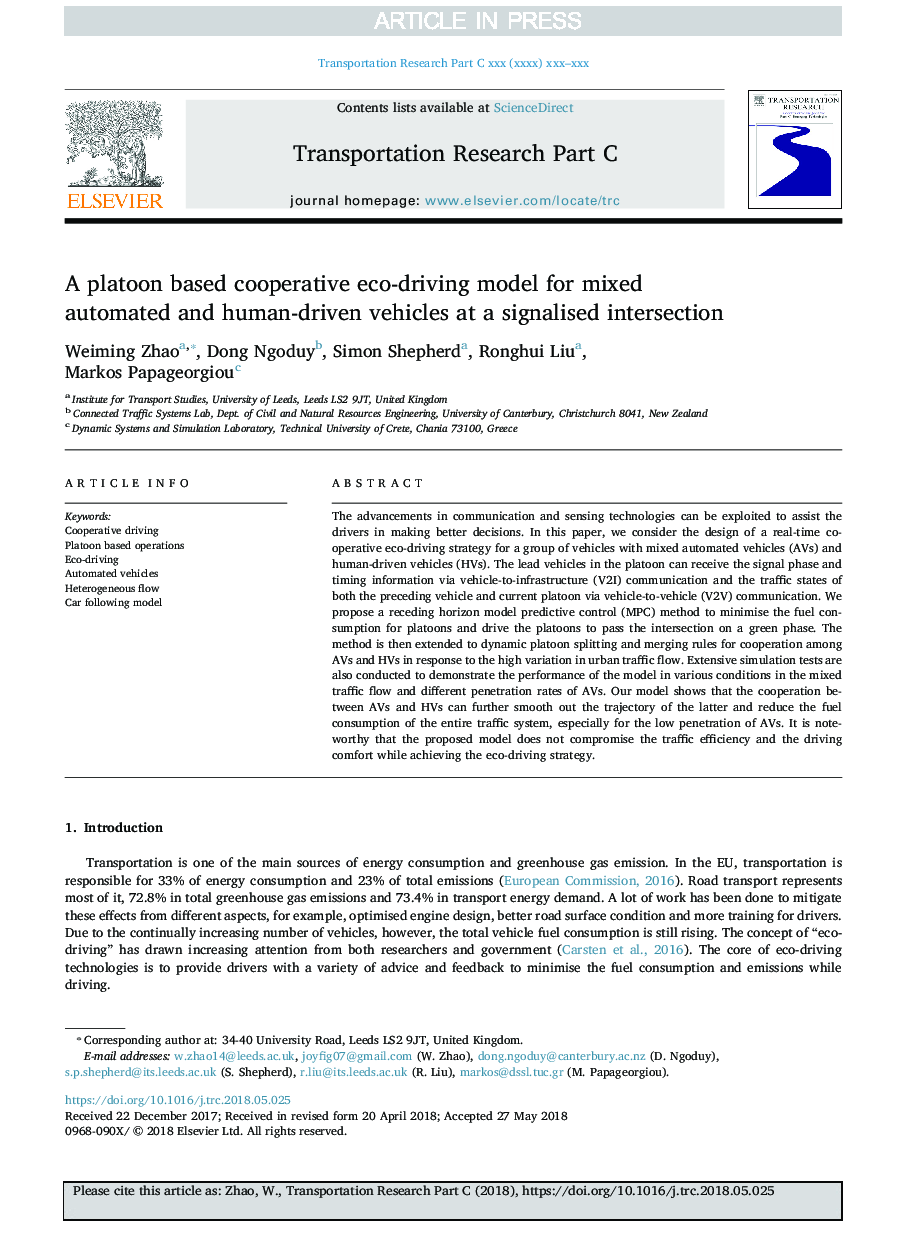| Article ID | Journal | Published Year | Pages | File Type |
|---|---|---|---|---|
| 11002833 | Transportation Research Part C: Emerging Technologies | 2018 | 20 Pages |
Abstract
The advancements in communication and sensing technologies can be exploited to assist the drivers in making better decisions. In this paper, we consider the design of a real-time cooperative eco-driving strategy for a group of vehicles with mixed automated vehicles (AVs) and human-driven vehicles (HVs). The lead vehicles in the platoon can receive the signal phase and timing information via vehicle-to-infrastructure (V2I) communication and the traffic states of both the preceding vehicle and current platoon via vehicle-to-vehicle (V2V) communication. We propose a receding horizon model predictive control (MPC) method to minimise the fuel consumption for platoons and drive the platoons to pass the intersection on a green phase. The method is then extended to dynamic platoon splitting and merging rules for cooperation among AVs and HVs in response to the high variation in urban traffic flow. Extensive simulation tests are also conducted to demonstrate the performance of the model in various conditions in the mixed traffic flow and different penetration rates of AVs. Our model shows that the cooperation between AVs and HVs can further smooth out the trajectory of the latter and reduce the fuel consumption of the entire traffic system, especially for the low penetration of AVs. It is noteworthy that the proposed model does not compromise the traffic efficiency and the driving comfort while achieving the eco-driving strategy.
Related Topics
Physical Sciences and Engineering
Computer Science
Computer Science Applications
Authors
Weiming Zhao, Dong Ngoduy, Simon Shepherd, Ronghui Liu, Markos Papageorgiou,
